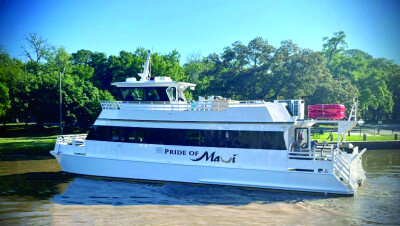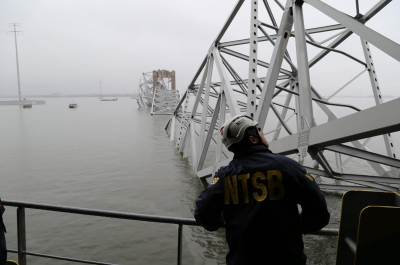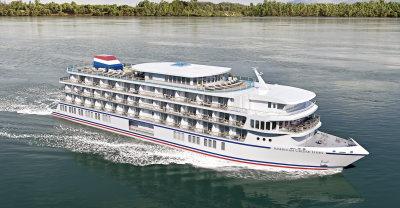If you love explosions and fireballs you’ll have a blast with this one. Back in the day I used to carry more than 100 attack missiles on my warship. Little did I know that one day I'd be on a towboat that was also equipped with missiles. I’m talking about compressed gas bottles.
To give you an idea how powerful onboard missiles can be, take a look at this YouTube video. It’s a blast. You've got to love those Russian dash cams. There’s even some Russian music to accompany it.
Look around your vessel and you’ll find more of these killer gas bottles onboard than you might think. You probably have some bottles in your oxy-acetylene rig. Red (acetylene) and green (oxygen) are standard colors, but I’ve seen many other colors. I've seen a compressed gas bottle of refrigerant painted orange. Often the tanks are so rusted you can’t tell what color they once were.
Every one of these compressed gas bottles is potentially a lethal missile and it can become a bomb if you’re really having a bad day. Unfortunately these things are some of the most neglected items onboard. Like I said, look around and you can often see them squirreled away topside in the fidley, in a junk locker, and even in the engine room. Let’s hope they’re not in the engine room where a fire is most likely to break out. Fire and gas bottles don’t mix.
Here are a few tips:
- Handle compressed gas bottles with care. Drop them and they could go boom or whoosh.
- Have enough hands and backs handling them. You don’t want to fumble these.
- Make sure the protective caps are installed over the bottle’s valves. If one of the valves gets damaged or broken off, the bottle is a Mach 1 missile. Add a spark and it could be a blow torch if the gas ignites.
- Keep the valves closed unless in use.
- The bottles need to be securely stowed in the upright position. Racks with the proper clamps and hardware are the only safe stowage. When you tell the deckhand to go secure the gas bottles that doesn’t mean securing it with string or bungee cords.
- Keep them away from heat sources like the engine room, engine exhausts or areas of hot work. I once found a barbeque located next to a compressed gas bottle. How do you like your boat, well done?
- Inspect the cylinders periodically and remove them from the boat if they are damaged, defective, deteriorated or leaking. Label them as bad. Put them in a safe place ashore and remember to tell the port engineer.
I know you might think it’s cool to have a missile-equipped boat, but the scorch marks on deck and “enemy target” destroyed won’t earn you the Medal of Honor. A five-minute walk-by to take a look at your missiles, aka compressed gas bottles, will save you that bad news call to dispatch or a CG-2692.
Sail safe!




